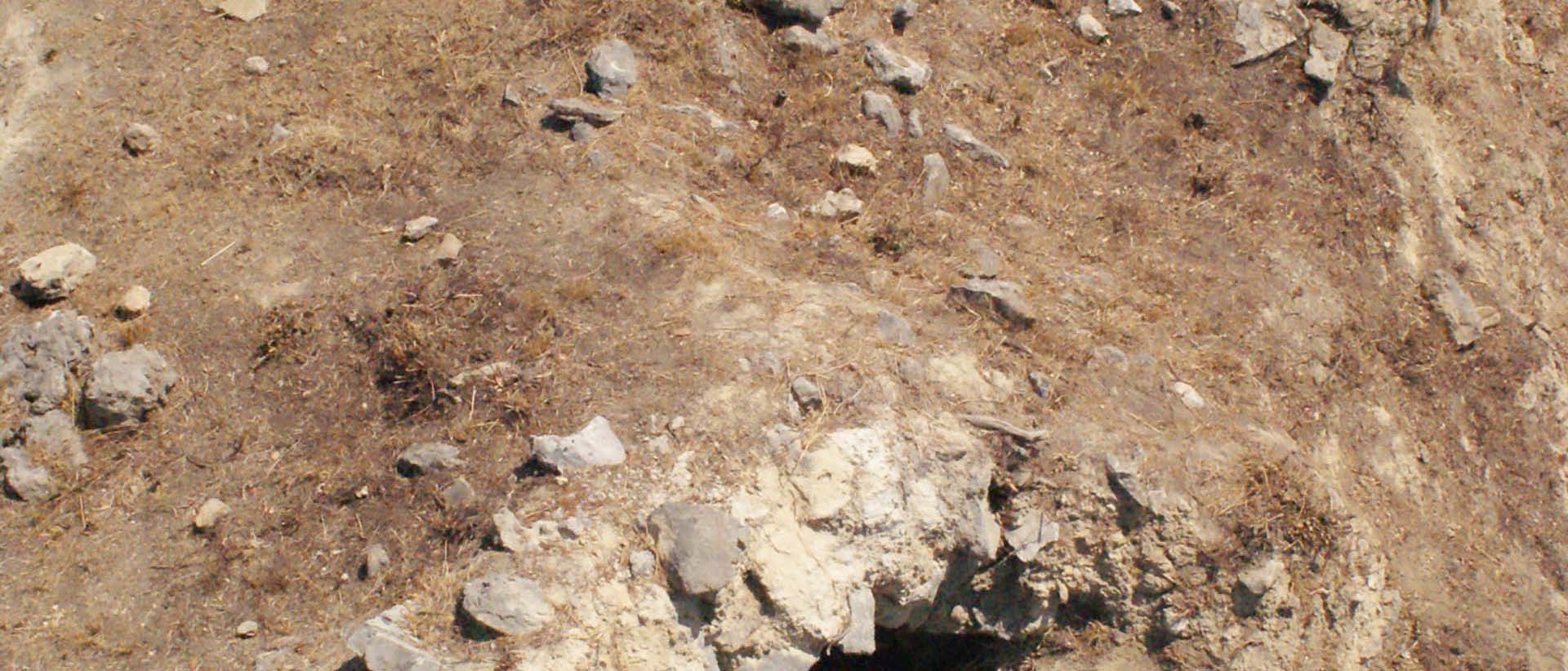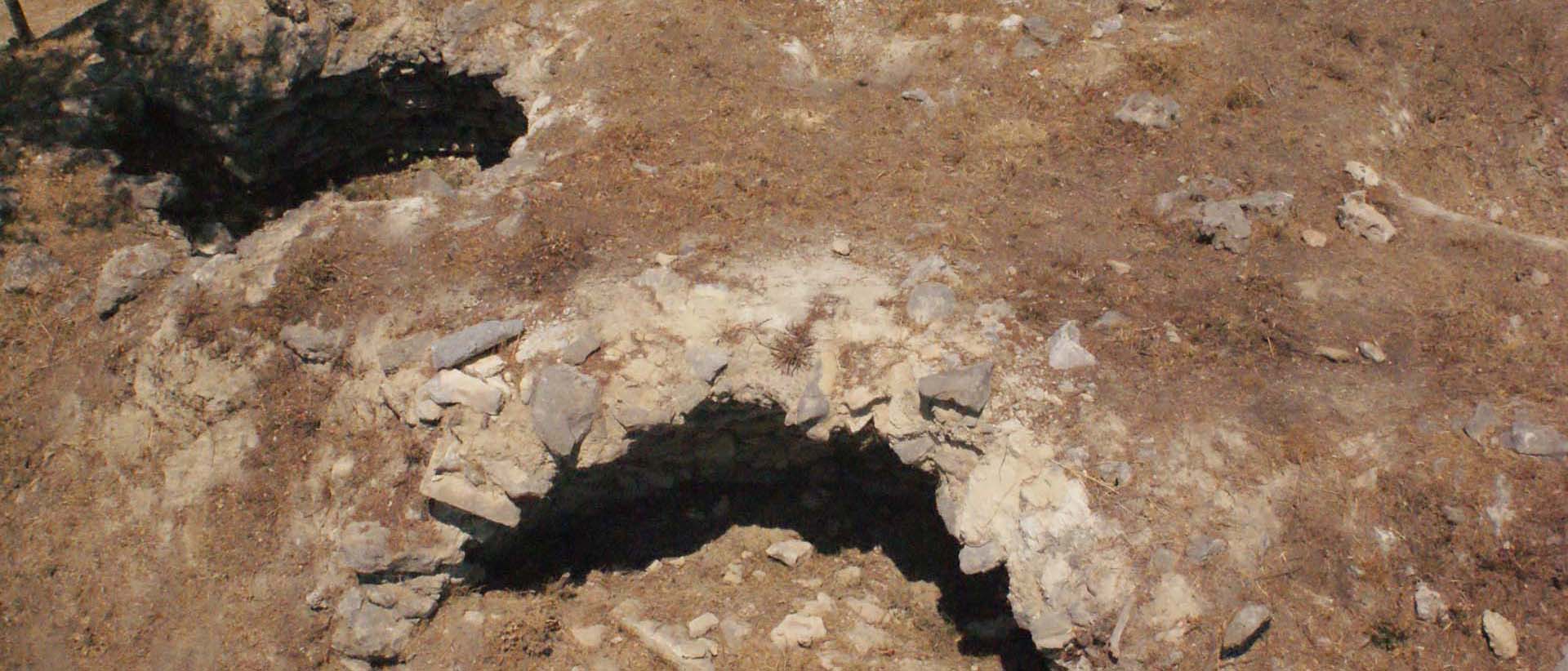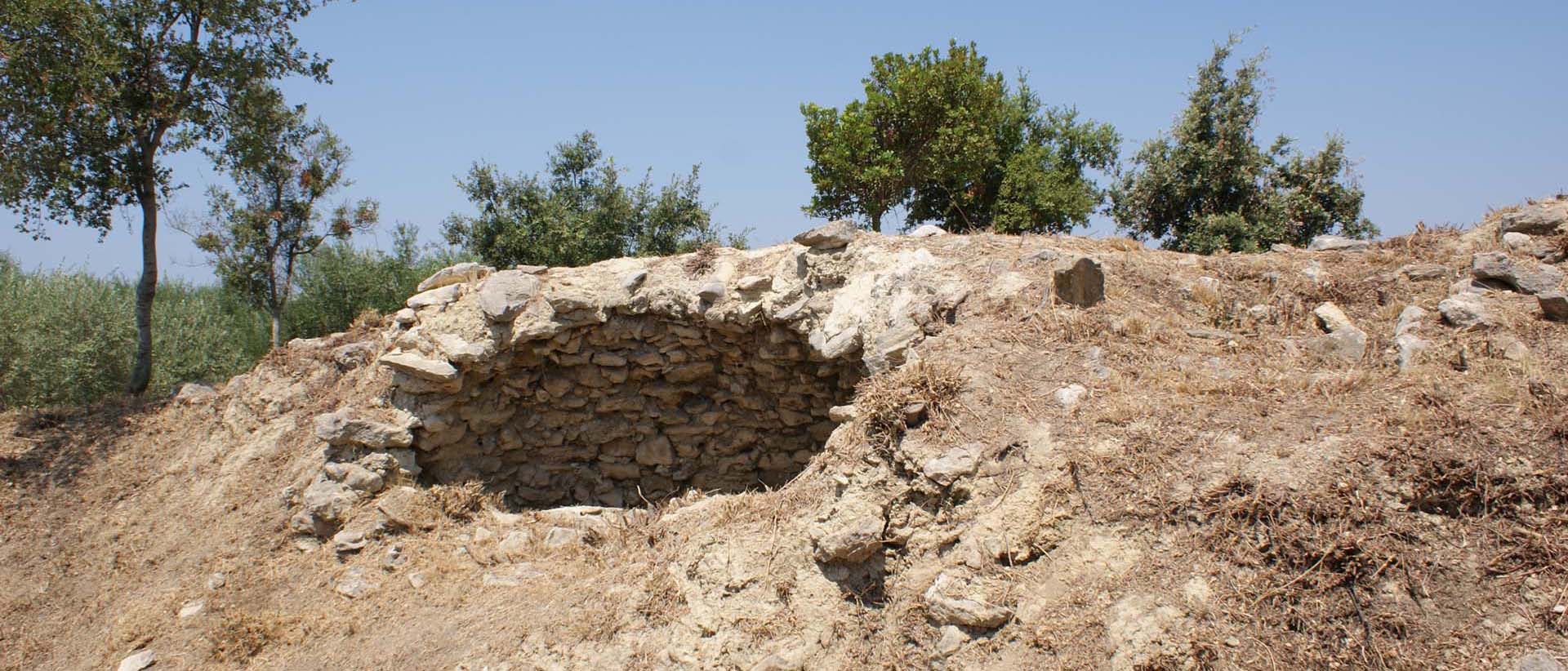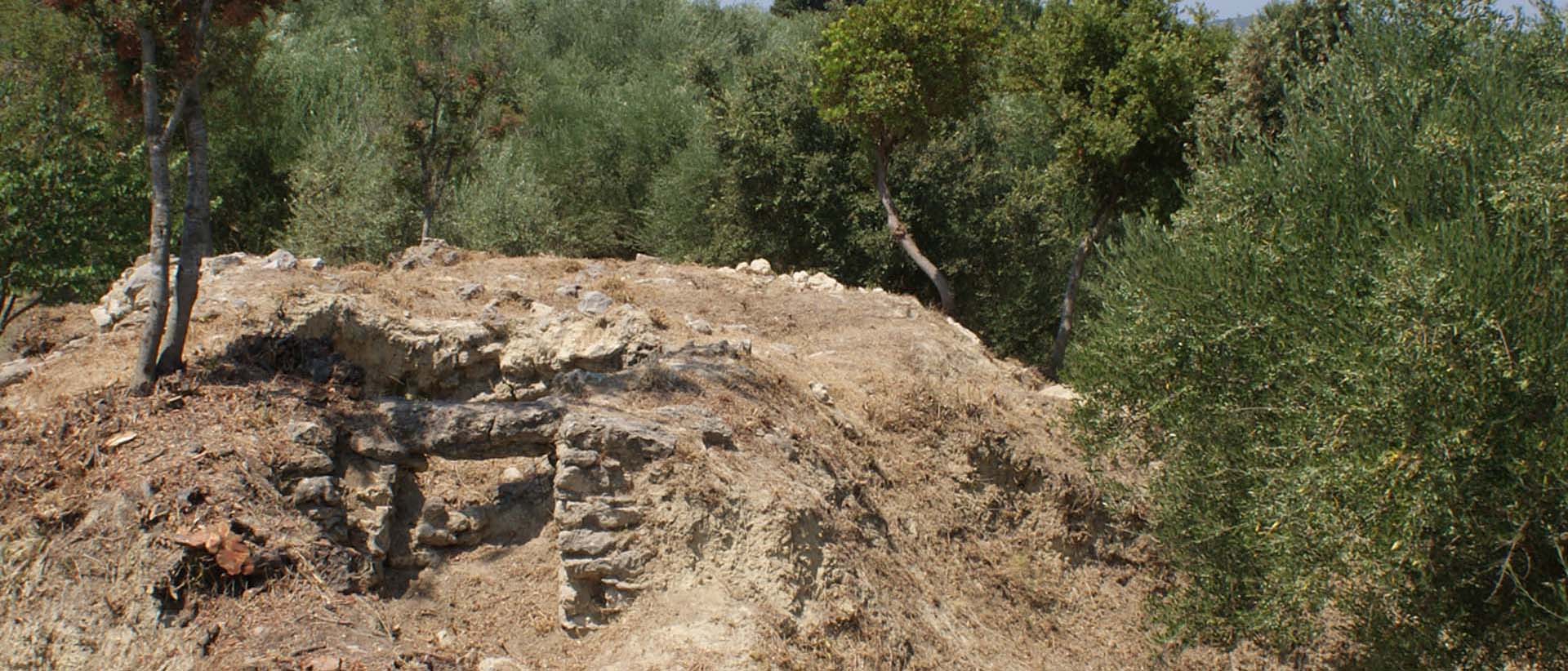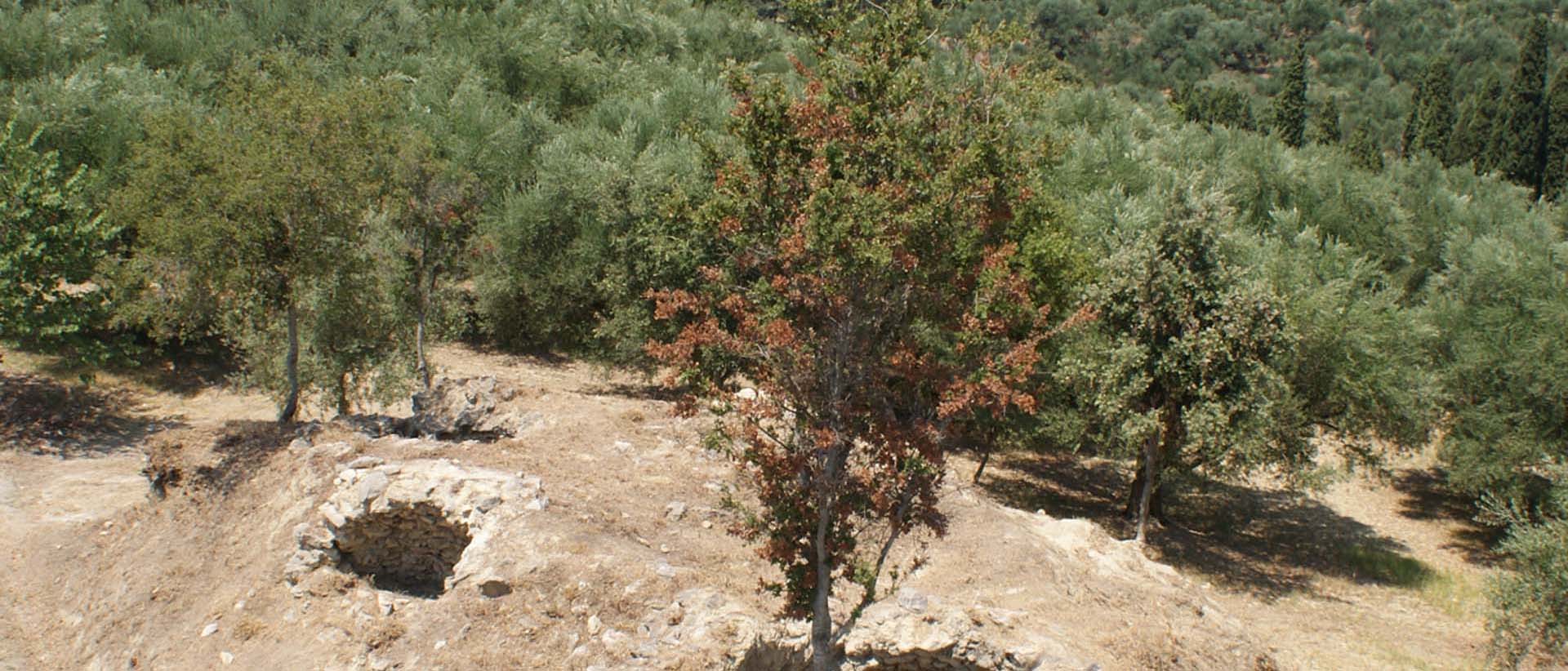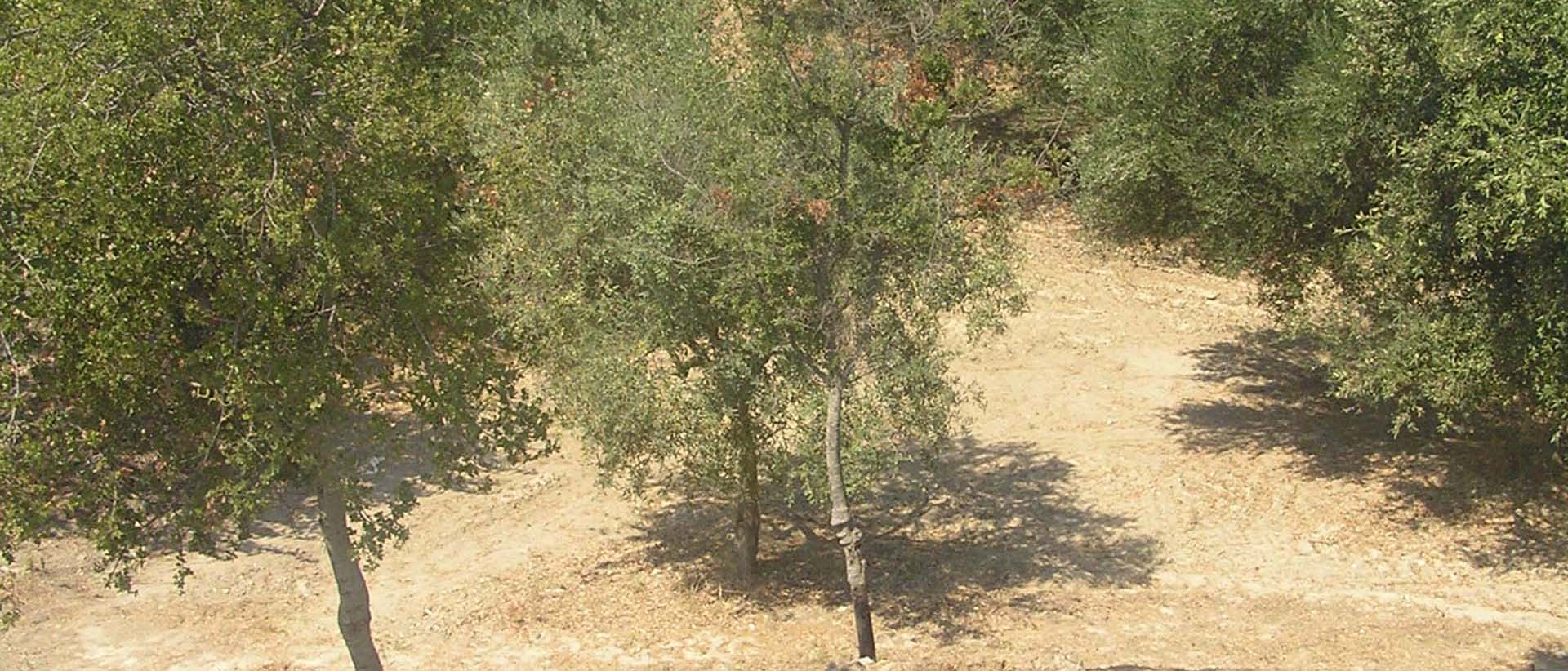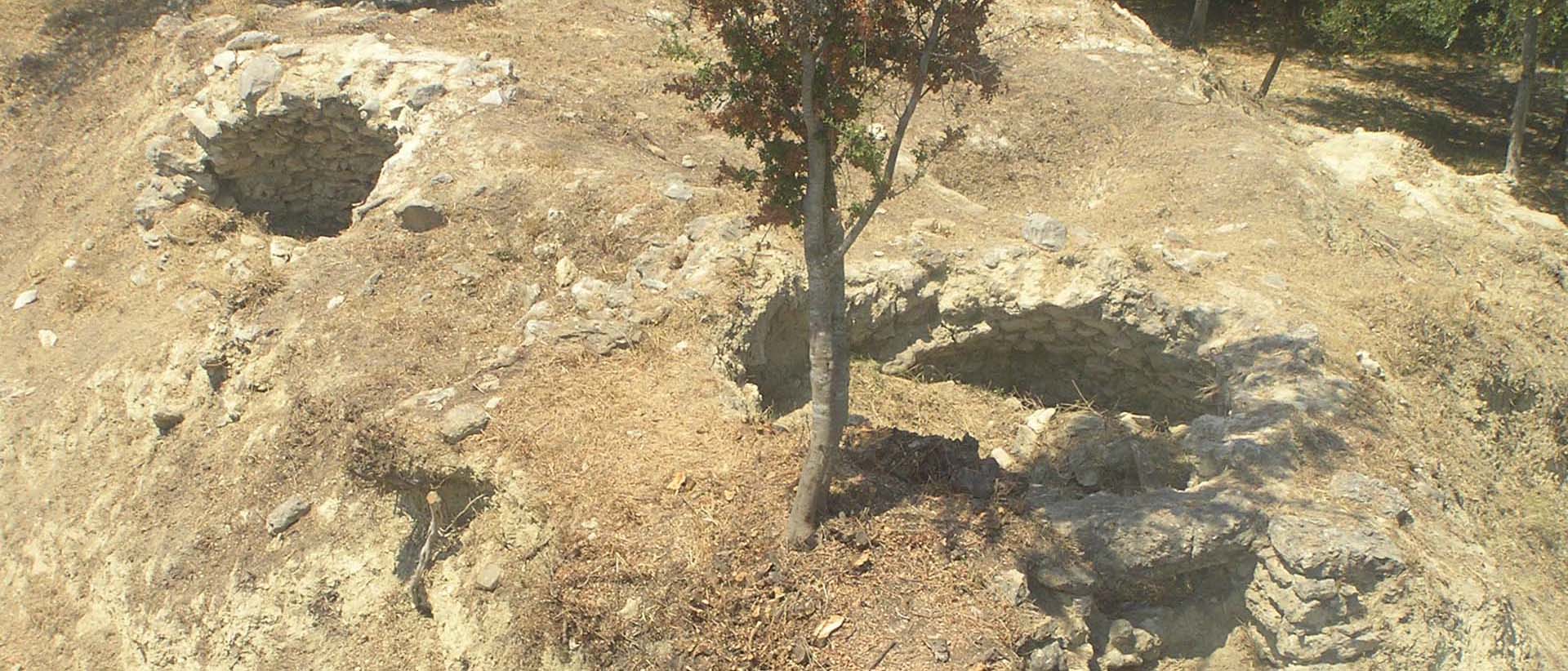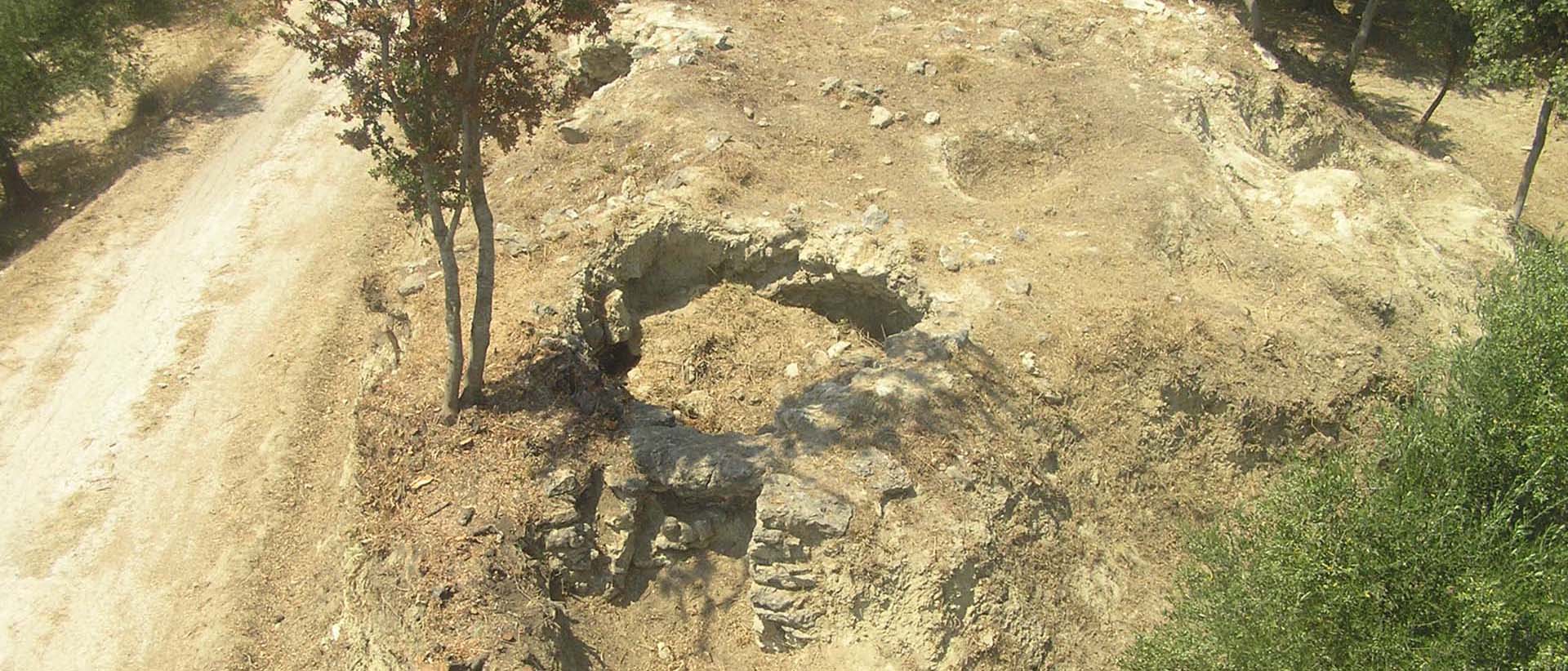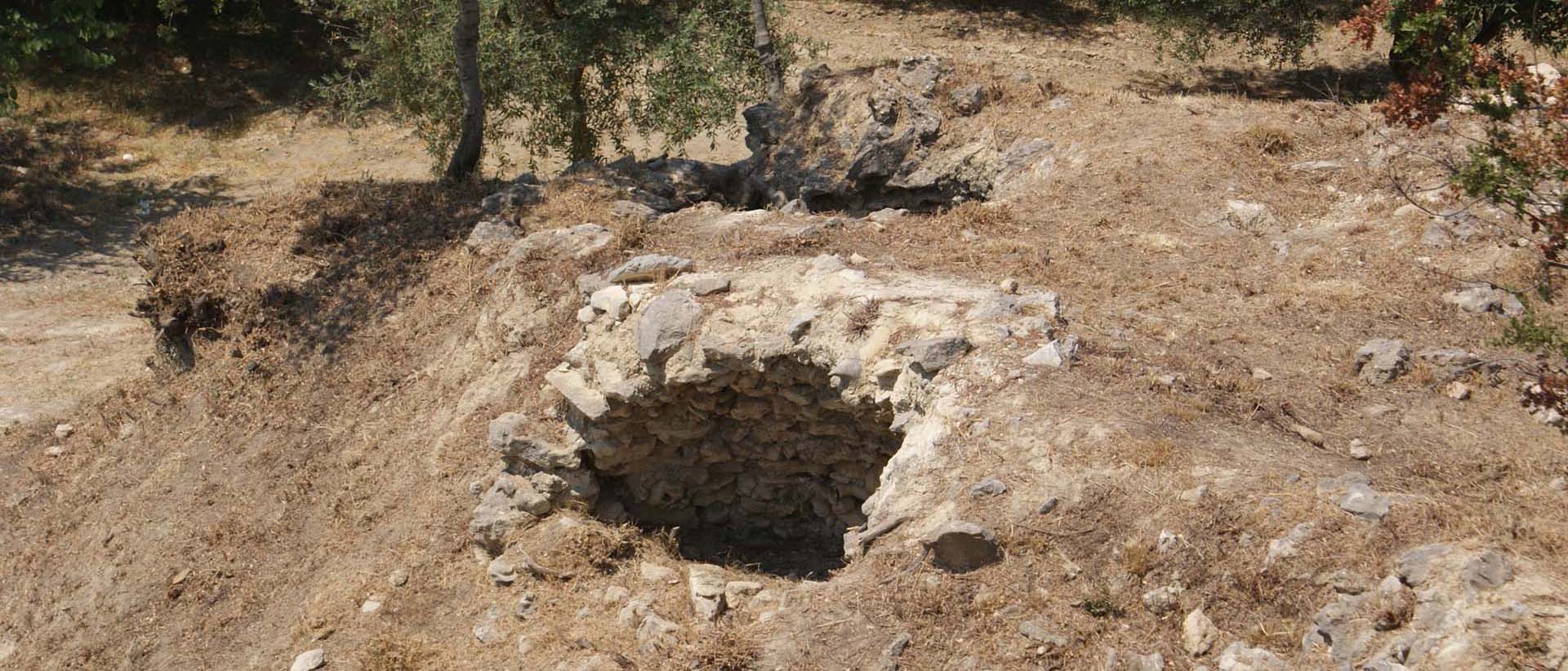
Tholos Tombs at Kaminia

At the site of Kaminia near the modern settlement of Kremmydia and at a distance of about 2-2.5 km northeast of the Tholos tombs of Koukounara, an artificial mound with five small Tholos tombs and four burial pithoi was investigated by Georgios Korres. It is a complex funerary monument representative of the burial practices during the period of the formation of the Mycenaean civilization in Messenia. The use of the tombs starts from the period of transition from the Middle Helladic to the early Mycenaean period (17th/16th century BC) and continues until the 13th century BC. The dead were accompanied by a variety of grave goods, including: a bronze bowl, bronze tweezers, bronze weapons and tools, clay and steatite spindle whorls, stone arrowheads, and lead nails. They were mainly family tombs and were associated either with a small local settlement or with the settlement center of Koukounara to the southeast. As in other Mycenaean tholos and chamber tombs of Messenia, traces of ancestor worship ceremonies during the Classical and Hellenistic period were found in the tombs at Kaminia.
Οι νεκροί συνοδεύονταν από ποικίλα κτερίσματα μεταξύ των οποίων: χάλκινη φιάλη, χάλκινες τριχολαβίδες, χάλκινα όπλα και εργαλεία, σφονδύλια από πηλό και στεατίτη, λίθινες αιχμές βελών, μολύβδινοι ήλοι. Οι τάφοι ήταν κυρίως οικογενειακοί και συνδέονται είτε με κάποιον μικρό τοπικό οικισμό είτε με το οικιστικό κέντρο της Κουκουνάρας στα νοτιοανατολικά. Όπως και σε άλλους μυκηναϊκούς θολωτούς και θαλαμωτούς τάφους της Μεσσηνίας, στους τάφους των Καμινίων εντοπίστηκαν ίχνη τελετών προγονολατρείας κατά τους κλασικούς και ελληνιστικούς χρόνους.



